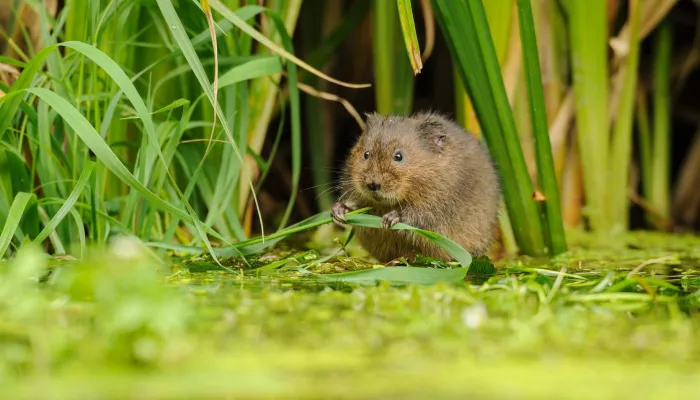About
The water vole lives along rivers, streams and ditches, around ponds and lakes, and in marshes, reedbeds and areas of wet moorland. Look out for the signs of water voles, such as burrows in the riverbank, often with a nibbled 'lawn' of grass around the entrance.
Water voles like to sit and eat in the same place, so piles of nibbled grass and stems may be found by the water's edge, showing a distinctive 45 degree, angled-cut at the ends. 'Latrines' of rounded, cigar-shaped droppings may also be spotted. Water voles start to breed in spring, having three to four litters a year of up to five young.
How to identify
The water vole has chestnut-brown fur, a blunt, rounded nose, small ears, and a furry tail. It is much bigger than other vole species. Scotland’s water voles often appear darker, with many having a black coat.
The similar brown rat is larger, with grey-brown fur, a pointed nose, large ears that protrude from its fur, and a long, scaly tail.
Did you know?
The water vole is famously known as 'Ratty' in Kenneth Grahame's classic children's tale, The Wind in the Willows. Despite being sometimes referred to as a 'water rat', there is no such thing - there are brown rats, black rats and water voles.

